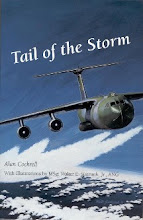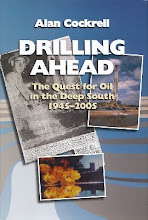Still not flying yet. Here's a story from long ago. It's too long for a single blog post so I'll continue it next time.
I always wanted to be a Thunderbird. That never panned
out, but I did get a chance to fly wing on Thunderbird Lead. I needed to try and prove myself to him, seeing as how my
reputation with him was somewhat less than stellar.
 |
| Col. Joe Moore (click the photo for more about Joe) |
It all started when I heard that Col. Joe Moore was
coming to take command of our wing at Korat, Thailand. In the wake of the cessation
of fighting in nearby Viet Nam, our unit was charged with being ready to go
back north if the North Vietnamese violated the terms, and we constantly
trained for that possibility. They did violate the peace terms, of course, but they
waited until we redeployed back to the states.
I was excited because I knew Col. Moore was a former Thunderbird team leader. I thought maybe I would get a chance to fly with him, but I knew we had about 80 pilots in the wing and the commander flew infrequently, and when he did, he usually picked a random choice for a wingman.
In the first meeting he had with is, in the base theater, he was terse. He made it clear that he would not tolerate any pilot taking off with an aircraft that had a known defect, no matter how trivial it may be. Afterwards I asked an older pilot why Moore was so intense about that order. We often flew with minor defects that we knew wouldn’t affect the flight. He told me that when Moore was Thunderbird Lead, he lost a team member who did just that—took off with a mechanical problem in order to do the show. So, it seemed that was Moore’s pet peeve.
Furthermore, I found the older pilots weren’t so
enthusiastic about Moore because he had a reputation of being a hard commander
to work for. I was to discover this to be true in two ways, the second of which involved me personally.
The first was when an emergency meeting was called. We all filed into the
theater and sat chatting and wondering what was up. We heard boots hitting the
floor coming up the aisle. Somebody called the room to attention. I saw Moore
and two staffers sweep past me heading to the podium. He told us to sit. He
looked out across the room, silently and ice cold. Then he thrust his arm into
the air, holding a piece of paper.
“This is the PIF I
put out last week!” he thundered.
PIF stood for Pilot Information File. It was a bulletin put out by headquarters
on a periodic basis that introduced a new rule, directive, or notice of any
sort the commander thought his pilots needed to know. Each pilot had to sign a
card verifying he had read the PIF. I don’t remember what the particular PIF
Moore was ranting over was about. But I vividly remember what he said next.
“SOMEBODY SCRIBBLED ON HERE YGTBSM!” He paused again and
slowly swept his eyes across the room, as if being able to spot the
perpetrator. Then he snarled, “If the man who wrote this is fighter pilot enough, let him STAND UP RIGHT NOW AND ADMIT IT!” He paused and scanned us. "But he'd better be ready for hell."
No one moved a muscle.
I was sitting in a room full of seasoned combat veteran fighter pilots—some were
even Mig killers—and no one dared challenge him. He stormed out the way he came
in without another word. I followed the murmuring crowd out thinking, “There’s
no way I ever want to tangle with that guy.” Yet I foolishly did.
It wasn’t long after, that I was assigned to a four-ship
air-to-air combat training mission. A-7s didn’t do much of that, since we were
an air-to-ground attack unit, but we had to maintain a basic proficiency in
dog-fighting skills. And I loved it. So it’s no surprise that I was eager to
fly that day.
As I added power to break out of the chocks I engaged the hydraulic nose wheel steering (NWS), done by pressing a button on the stick. It didn’t come on. I stopped. I motioned for the crew chief to hook back up. He did and I told him the problem. He checked for leaks and any other abnormalities and couldn’t find any. I cleared him to disconnect and powered up. This time it came on. But half way down the taxiway to the arming area, the NWS twice cycled off, then on, by itself.
As I added power to break out of the chocks I engaged the hydraulic nose wheel steering (NWS), done by pressing a button on the stick. It didn’t come on. I stopped. I motioned for the crew chief to hook back up. He did and I told him the problem. He checked for leaks and any other abnormalities and couldn’t find any. I cleared him to disconnect and powered up. This time it came on. But half way down the taxiway to the arming area, the NWS twice cycled off, then on, by itself.
 |
| A-7D in arming pad at Korat |
On take-off roll I felt the NWS cycle on and off again.
I could have aborted. I didn’t.
We flew out and did some great air-to-air work, and I was
glad I flew. However, on the way back to Korat, I got to thinking. Thinking is
never a good thing for a raw wingman to do, so the song goes. Just fly and keep your mouth shut.
I told the leader—another one of those seasoned, war weary fighter pilots—that I thought it would be best if I took the approach end barrier, in case the NWS decided to do something quirky, like a hard-over, sending me off the runway. He turned his head my way and asked a question in a manner that suggested he would recommend against my decision. "Are you sure you want to do that?"
 |
| On Initial at Korat |
 |
| Approach end arresting cable |
After the arrestment, the maintenance crew disengaged the
cable and I raised the hook. I shut the jet down on the runway and climbed down.
They immediately hooked up a tow tug.
My squadron commander, Col. Ryan sat waiting for me in
his truck. When I got in he said, “That was one of the prettiest arrestments I’ve
ever seen.” That made me feel good, but his next words didn’t. “Col. Moore is
mad as hell. He knows you took that plane with that problem.” He looked sternly at me. “He wouldn't have known if you had'nt have declared an emergency." He started the truck and headed back to the squadron. "You did the right thing, though," he added, "taking the cable, but I’m
afraid there’s trouble ahead.”
--continued next post--





Anxious to read about the "trouble ahead."
ReplyDelete